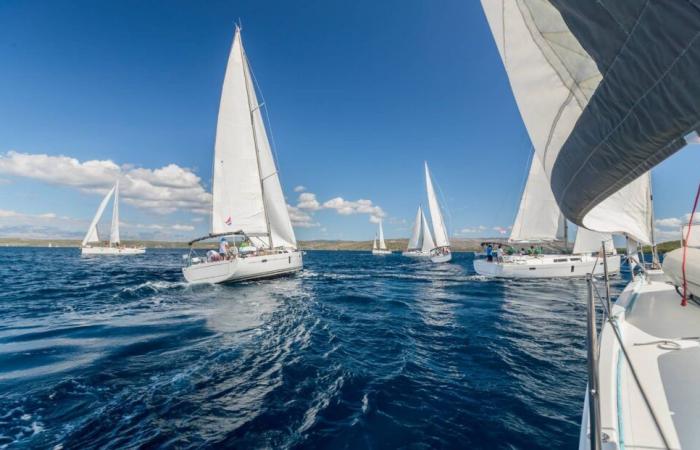The Vendée Globe is one of the most legendary and demanding races in the world: a journey of more than 40,000 kilometers around the globe, where each skipper finds himself alone facing the immensity of the oceans. Beyond the sporting challenge, this adventure is also a unique opportunity to explore some of the most breathtaking landscapes on the planet. Across raging oceans, isolated islands and spectacular coastlines, Vendée Globe sailors cross often inaccessible places, imbued with wild beauty.
What exactly is the Vendée Globe?
The Vendée Globe is much more than a sailing race. This exceptional challenge takes sailors across oceans with extreme conditions, but also to places of spectacular beauty. From the south of the Atlantic to the icy seas of Antarctica, via the coasts of Africa and South America, the Vendée Globe route does not stop in ports, but runs along inaccessible regions to ordinary mortals, offering a grandiose spectacle for sailors and enthusiasts alike.
Currently, the Vendée Globe is the largest sailing race around the world, solo, without stopovers or assistance. The event is inspired by the 1968 Golden Globe, which saw the first solo, non-stop circumnavigation, rounding the three great capes (Good Hope, Leeuwin and Horn). Over the nine editions of the Vendée Globe, nicknamed the Everest of the seas, around 200 competitors started, but only 114 managed to cross the finish line. This figure testifies to the extreme difficulty of this global event, where sailors face freezing temperatures, giant waves and threatening skies in the Deep South. The Vendée Globe is both a maritime adventure and an inner journey where you explore the limits of your mind and body.
Breathtaking landscapes from the skippers
After leaving the port of Les Sables d'Olonne, the sailboats set off on a legendary course, circumventing the three famous capes: the Cape of Good Hope in South Africa, Cape Leeuwin in Australia, and Cape Horn in South America. South. These emblematic points, known for their difficult conditions, also offer wild and incredible beauty. Skippers have the opportunity to admire spectacular panoramas, from the rugged coasts of South Africa to the vast expanses of the Indian Ocean, without forgetting the imposing mountains that border Cape Horn.
The Cape of Good Hope
The Cape of Good Hope is a symbolic passage for sailors, marking the transition between the Atlantic and the Indian Ocean. Although skippers do not approach this cape directly, they can admire from a distance its imposing mountains standing proudly on the horizon, and its rough seas with its colossal waves. This place offers a memorable entry to the wildest seas in the world.
The Doldrums and its unpredictable challenges
Before reaching the Cape of Good Hope, the skippers must face a feared zone: the Doldrums. Located just north of the equator, this region is known for its unpredictable weather conditions. Sailboats can be trapped in areas of flat calm, where the trade winds meet, leaving the sails without hold. Skippers must therefore demonstrate strategy and patience to cross this area without losing too much time. Sudden tropical downpours add additional difficulty to this crossing.
Antarctica and the Roaring 40s
Once south of Africa, sailors enter the Roaring 40s zone, where winds often blow with impressive force. The sailboats speed along in the middle of the Southern Ocean towards the different capes. In addition to the navigation challenges, skippers witness a breathtaking natural spectacle: the icy waters, floating icebergs and pristine expanses evoke the majesty and solitude of this remote region. This passage also offers the opportunity to approach the Antarctic continent, an area that is still little explored but crucial for scientific research.
Cape Horn: A legendary passage
Finally, the last cape, the one that all sailors dream of crossing, is Cape Horn. This crossing point between the Atlantic Ocean and the Pacific Ocean is one of the most feared places, with gigantic waves and violent winds. By going around it, skippers may see the wild coasts of Tierra del Fuego, one of the southernmost regions in the world. This moment symbolizes a technical feat and a dive into one of the most fascinating areas on the planet.






